A Question of Scale: Plant Phenology Across Time and Space
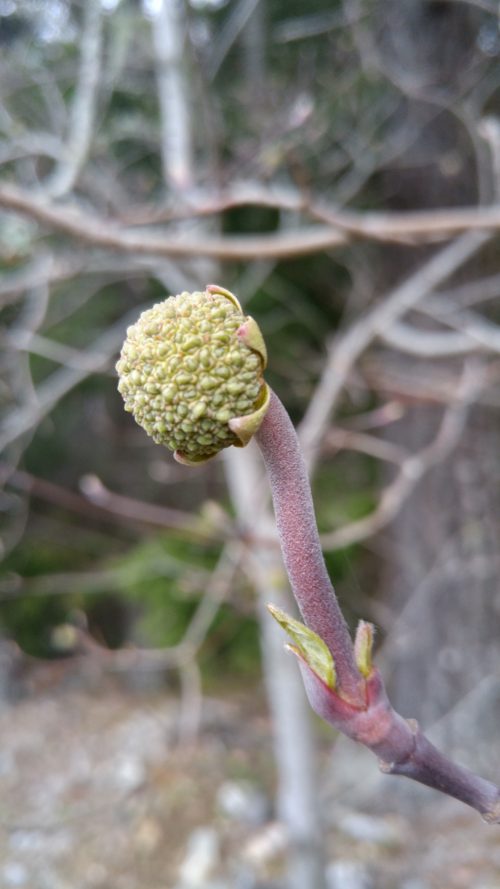
By Joe Loviska, graduate student in the Institute’s 15th cohort.
March 20, 2016. I’ve been keeping an eye on the western flowering dogwood (Cornus nuttallii) out in the parking lot of the Learning Center. It’s a small tree, maybe twelve feet in height. Its gray trunk and branches are spindly, filling out the vague shape of a mop standing on its handle. This dogwood grows at 1,220 feet above sea level on the west slope of the Cascades. It occupies a site that has good southern exposure, with dry, well-drained soil and a closed canopy of Douglas firs above. All of these facts and more dictate the beginning of the spring season for this particular tree, which is today. Today its leaf tips are poking out. Yesterday they were not. My friend the dogwood tree is awake.
Now it just so happens that today, March 20, the 80th day of the year (DOY), is also the vernal equinox. That is, the year-long wobble of Earth’s axis has tilted in such a way that the equator is squarely facing the sun. Translation? Equal amounts of day and night across the globe. In the Northern Hemisphere, this means the first day of spring, right in time for the dogwood to open its buds. Coincidence? You decide.
I chose to study plant phenology in a range of scales to determine whether spring is coming earlier for my dogwood friend here in the North Cascades. Phenology is the study of seasonal timing events in plants and animals. Flowering, migrations, breeding, seed dispersal — everything in the biotic community that happens on a yearly cycle can be understood through phenology. Keeping relative scale as a unifying structure allowed me to navigate the differences between personal, contextual observations (seasons defined by longitude, elevation, and interactive factors such as what I think it means for spring to arrive) and wide-ranging observations from the scientific community (seasonal drivers and trends on a regional and global scale). Basically, I hold certain observations close to my heart, like the feeling that I get in late April when a gust of warm air hits my face and suddenly the entire world feels like it’s on the brink of exploding into leafy green exuberance. But I know that even those personal observations can be connected to broad trends of global significance, and so I look to my dogwood friend to show me those connections.
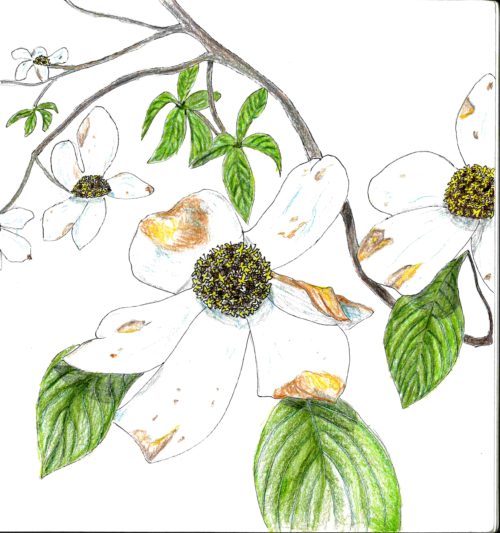
Weather and climate are primary drivers of seasonal timing events, while celestial movements around the sun generally dictate the weather and climate. But we know that the climate is changing, which, in turn, causes changes in phenological patterns. Flowers are opening earlier in the year, hibernating mammals awake earlier. Summers are drier, winters are warmer. By tracking changes in spring onset through time, scientists can detect a “globally coherent fingerprint of climate change impacts”. In fact, there’s a number for that. Spring is now arriving 2.5 days per decade earlier. But of course it’s not that simple.
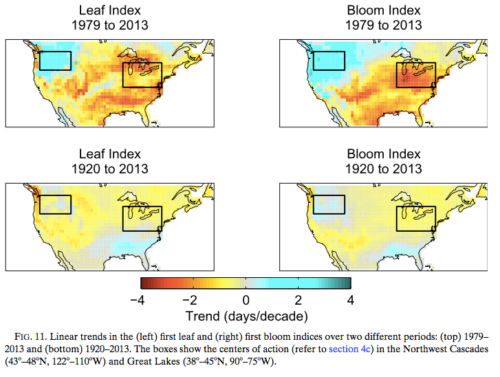
These four maps show spring onset based on first leaf and first bloom observed in lilacs. Lilacs are a handy standard of measure for making plant observations across the continent, since they grow in all habitat types and their flowering and reproduction are quite simple. These maps show that the 2.5 days per decade number is not universal across the landscape. The top maps, where the time scale is from 1979 – 2013, suggest that spring is actually coming later in the North Cascades by 4 days per decade. But when we consider observations dating all the way back to 1920 (the earliest that lilac observations are available) as the bottom maps do, suddenly the trend looks much less severe: in fact, our region hovers around average or even tends toward earlier spring onset. The same metrics, first leaf and first bloom, are shown in the timeseries graph below and show us a little bit about why this is the case.

Notice the overall appearance of a sine wave of these onset dates. Beginning around 1940, spring onset pushes later into the year. But that trend reverses itself in the mid-1960’s, and bottoms out at the earliest dates in the 1990’s. What gives? Why the variation?
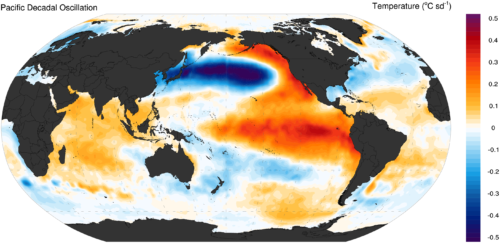
Another sine wave, this one a spatial representation of sea surface temperatures. This map describes the Pacific Decadal Oscillation, a phenomenon of ocean temperatures that follows a long time scale, on the order of decades. In fact, we’ve only seen two full cycles of the PDO since the beginning of the 20th century! In the graph below, notice the rough correlation between the cold phase of the PDO and our later spring onset dates in the previous graph. Of course there are innumerable local variations, but I’d say we’re looking at the smoking gun for our regional-level variance in spring onset.
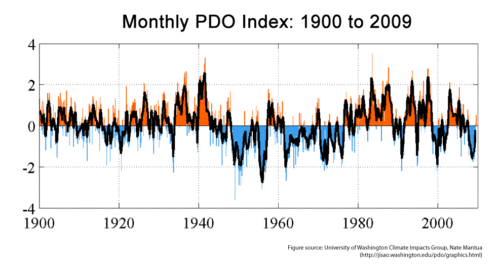
Not to say that climate change isn’t playing a part. As they continue, cycles like the PDO will move on the graph toward hotter overall temperatures, while still experiencing cold phases. Perhaps a little more disturbing, climate change might be breaking some of the predictability of these cycles. Look at the last few years of the PDO phase. See all those fast switches? Scientists still aren’t sure what to make of those.
So what does this mean for our friendly neighborhood dogwood? One more piece of science before you go. Phenological responses in plants follow a combination of three strategies: tracking temperature, fulfilling winter chilling requirements, and tracking photoperiod (day length relative to night length). Some plants just follow temperature shifts. In a warming climate, these plants are going to show their leaves and flowers earlier in the year. Other plants, like our dogwood, might be temperature sensitive, but also utilize photoperiod to regulate their phenophases. This evolutionary adaptation is gives some insurance against late freezes that often occur well into the year. So even in a changing climate, our dogwood will likely keep leafing out somewhere around the spring equinox. This would be fine if the dogwood were the only species around, but in a complex natural community, plants and animals have intricate relationships. No one yet knows what effects mismatches in plant phenophase timing will have on insect emergence, bird migrations, or ecosystem resilience. For myself, I will keep observing.
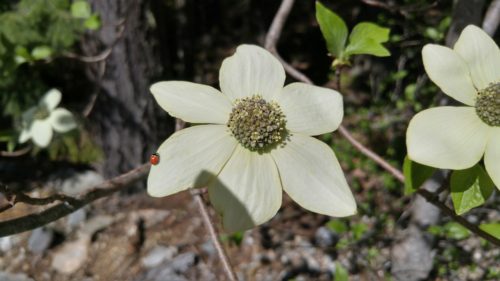
office-2007-product-key |
office-2007-ativation-key |
office-2007-iso |
office-2007-keys |
office-2010-key |
office-2010-product-key |
office-2010-ativation-key |
office-2010-iso |
office-2010-keys |
office-2013-key |
office-2013-product-key |
office-2013-ativation-key |
office-2013-iso |
office-2013-keys |
office-2016-key |
office-2016-product-key |
office-2016-ativation-key |
office-2016-iso |
office-2016-keys |
office-2007-key |
office-2007-product-key |
office-2007-ativation-key |
office-2007-iso |
office-2007-keys |
office-2010-key |
office-2010-product-key |
office-2010-ativation-key |
office-2010-iso |
office-2010-keys |
office-2013-key |
office-2013-product-key |
office-2013-ativation-key |
office-2013-iso |
office-2013-keys |
office-2016-key |
office-2016-product-key |
office-2016-ativation-key |
office-2016-iso |
office-2016-keys |
office-2007-key |
office-2007-product-key |
office-2007-ativation-key |
office-2007-iso |
office-2007-keys |
office-2010-key |
office-2010-product-key |
office-2010-ativation-key |
office-2010-iso |
office-2010-keys |
office-2013-key |
office-2013-product-key |
office-2013-ativation-key |
office-2013-iso |
office-2013-keys |
office-2016-key |
office-2016-product-key |
office-2016-ativation-key |
office-2016-iso |
office-2016-keys |
office-2007-key |
office-2007-product-key |
office-2007-ativation-key |
office-2007-iso |
office-2007-keys |
office-2010-key |
office-2010-product-key |
office-2010-ativation-key |
office-2010-iso |
office-2010-keys |
office-2013-key |
office-2013-product-key |
office-2013-ativation-key |
office-2013-iso |
office-2013-keys |
office-2016-key |
office-2016-product-key |
office-2016-ativation-key |
office-2016-iso |
office-2016-keys |
office-2007-key |
office-2007-product-key |
office-2007-ativation-key |
office-2007-iso |
office-2007-keys |
office-2010-key |
office-2010-product-key |
office-2010-ativation-key |
office-2010-iso |
office-2010-keys |
office-2013-key |
office-2013-product-key |
office-2013-ativation-key |
office-2013-iso |
office-2013-keys |
office-2016-key |
office-2016-product-key |
office-2016-ativation-key |
office-2016-iso |
office-2016-keys |
office-2007-key |
office-2007-product-key |
office-2007-ativation-key |
office-2007-iso |
office-2007-keys |
office-2010-key |
office-2010-product-key |
office-2010-ativation-key |
office-2010-iso |
office-2010-keys |
office-2013-key |
office-2013-product-key |
office-2013-ativation-key |
office-2013-iso |
office-2013-keys |
office-2016-key |
office-2016-product-key |
office-2016-ativation-key |
office-2016-iso |
office-2016-keys |
office-2007-key |
office-2007-product-key |
office-2007-ativation-key |
office-2007-iso |
office-2007-keys |
office-2010-key |
office-2010-product-key |
office-2010-ativation-key |
office-2010-iso |
office-2010-keys |
office-2013-key |
office-2013-product-key |
office-2013-ativation-key |
office-2013-iso |
office-2013-keys |
office-2016-key |
office-2016-product-key |
office-2016-ativation-key |
office-2016-iso |
office-2016-keys |
office-2007-key |
office-2007-product-key |
office-2007-ativation-key |
office-2007-iso |
office-2007-keys |
office-2010-key |
office-2010-product-key |
office-2010-ativation-key |
office-2010-iso |
office-2010-keys |
office-2013-key |
office-2013-product-key |
office-2013-ativation-key |
office-2013-iso |
office-2013-keys |
office-2016-key |
office-2016-product-key |
office-2016-ativation-key |
office-2016-iso |
office-2016-keys |
office-2007-key |
office-2007-product-key |
office-2007-ativation-key |
office-2007-iso |
office-2007-keys |
office-2010-key |
office-2010-product-key |
office-2010-ativation-key |
office-2010-iso |
office-2010-keys |
office-2013-key |
office-2013-product-key |
office-2013-ativation-key |
office-2013-iso |
office-2013-keys |
office-2016-key |
office-2016-product-key |
office-2016-ativation-key |
office-2016-iso |
office-2016-keys |

